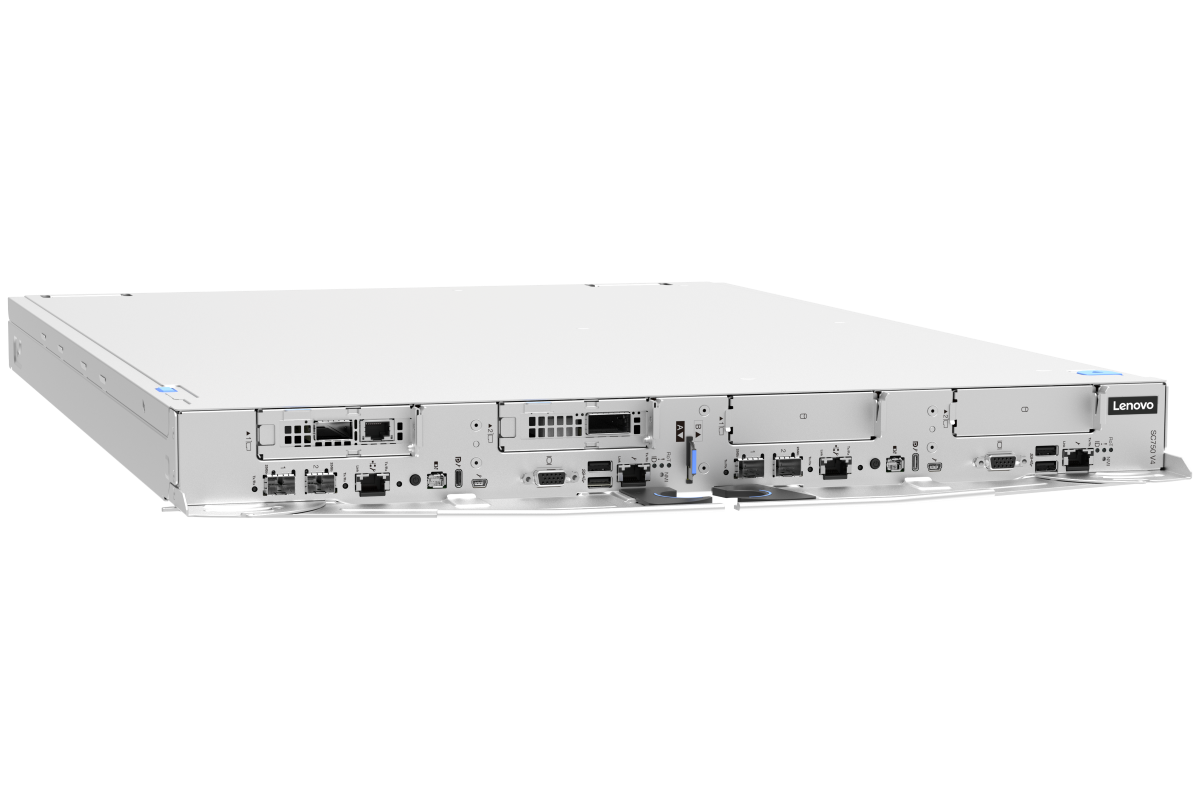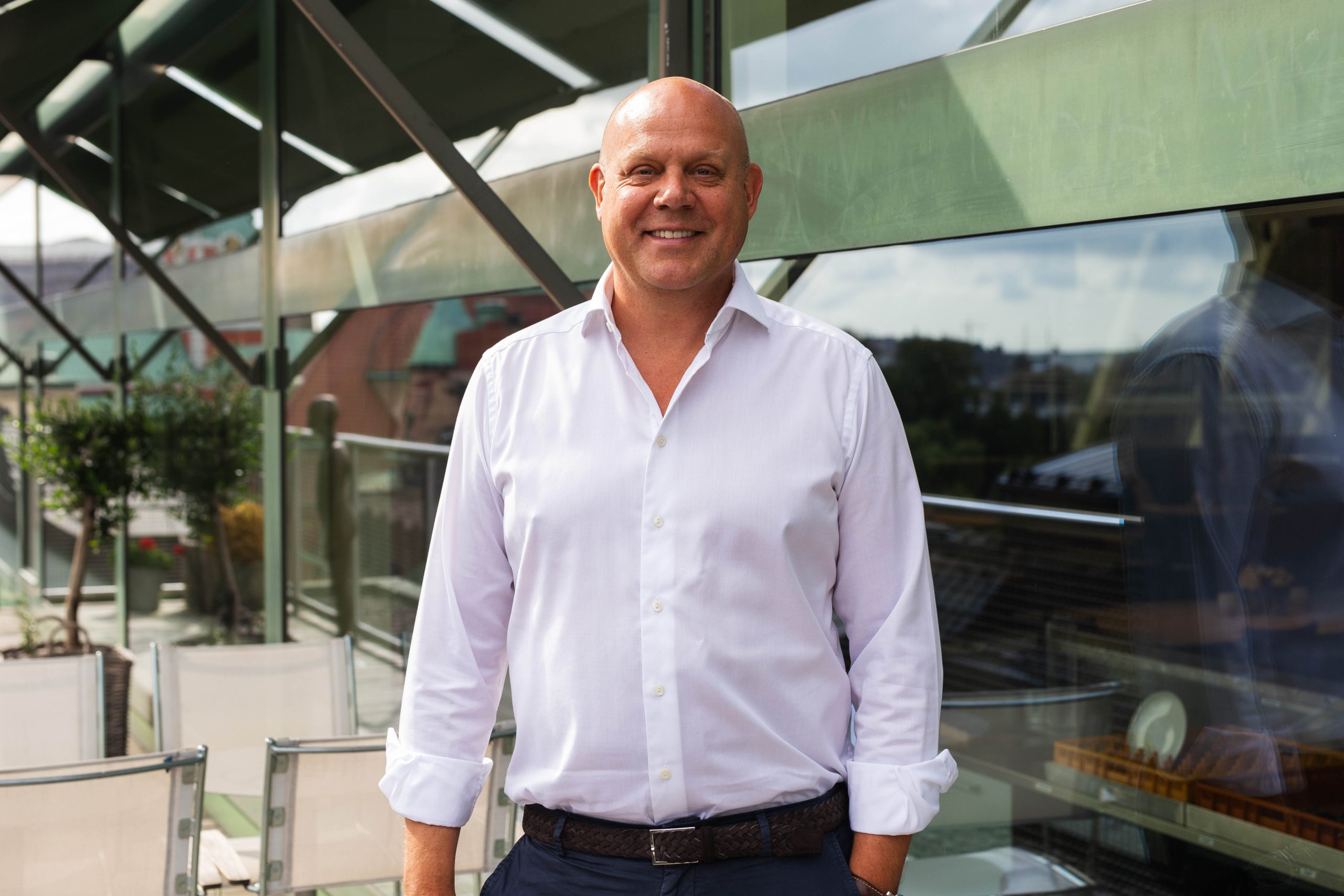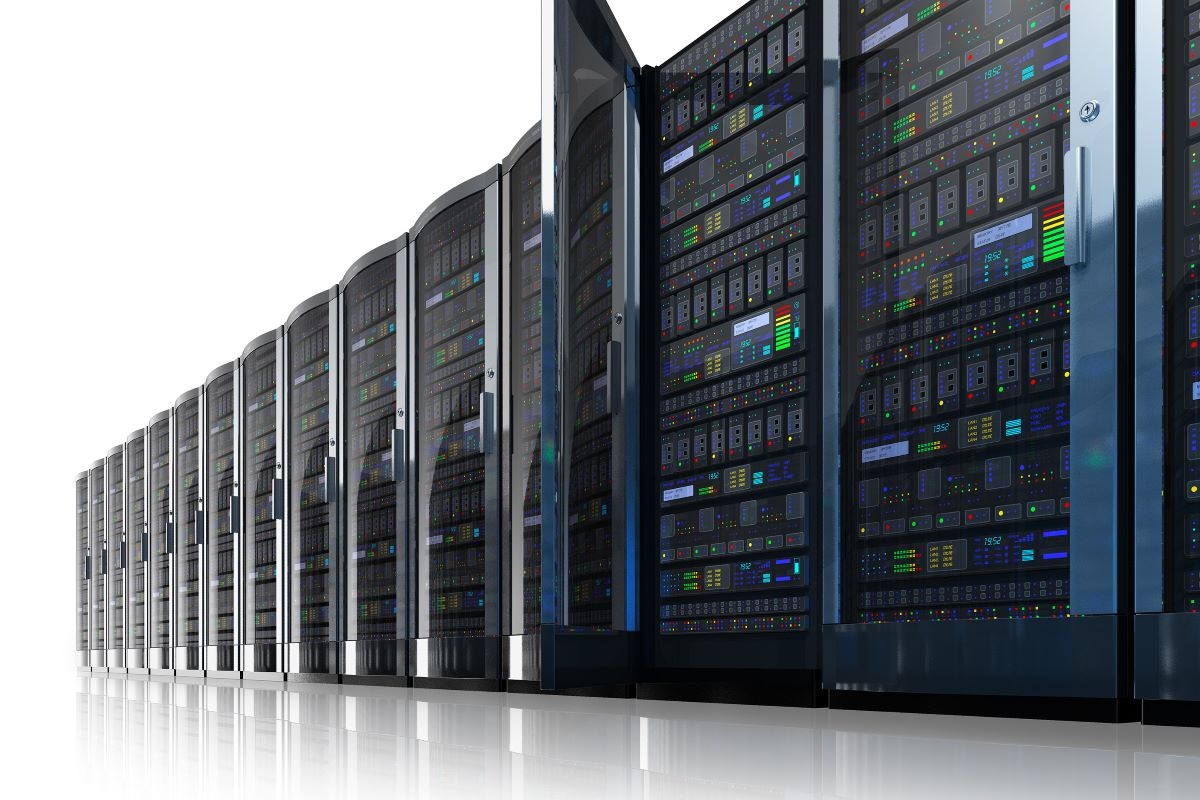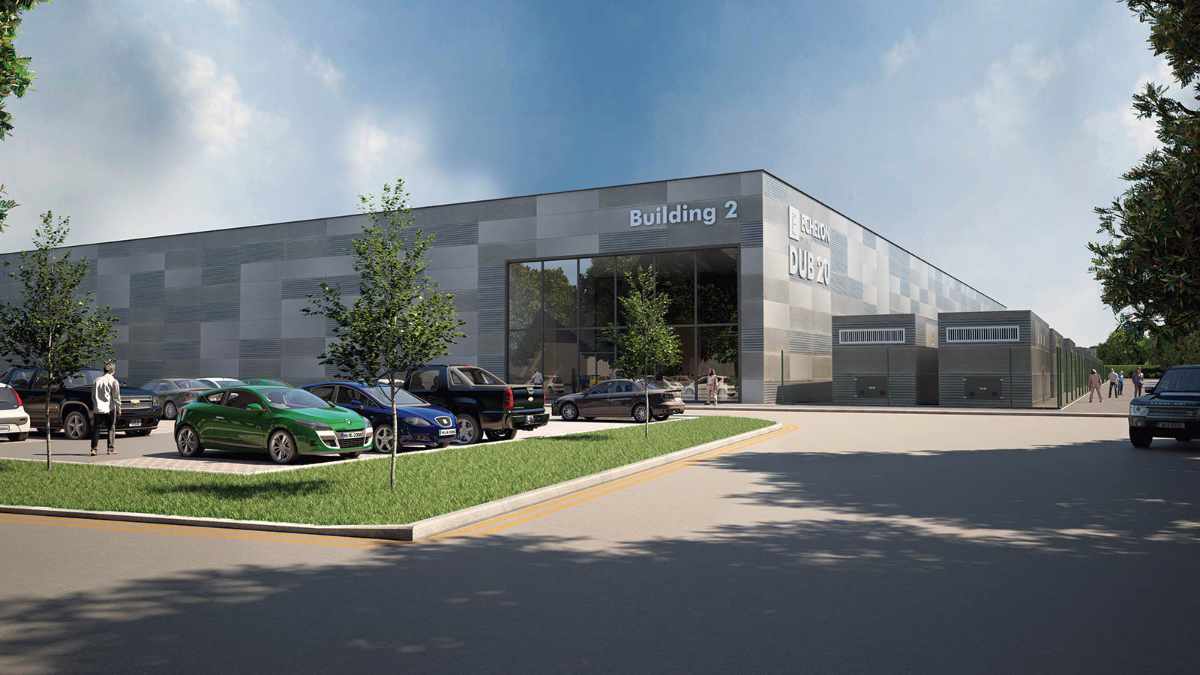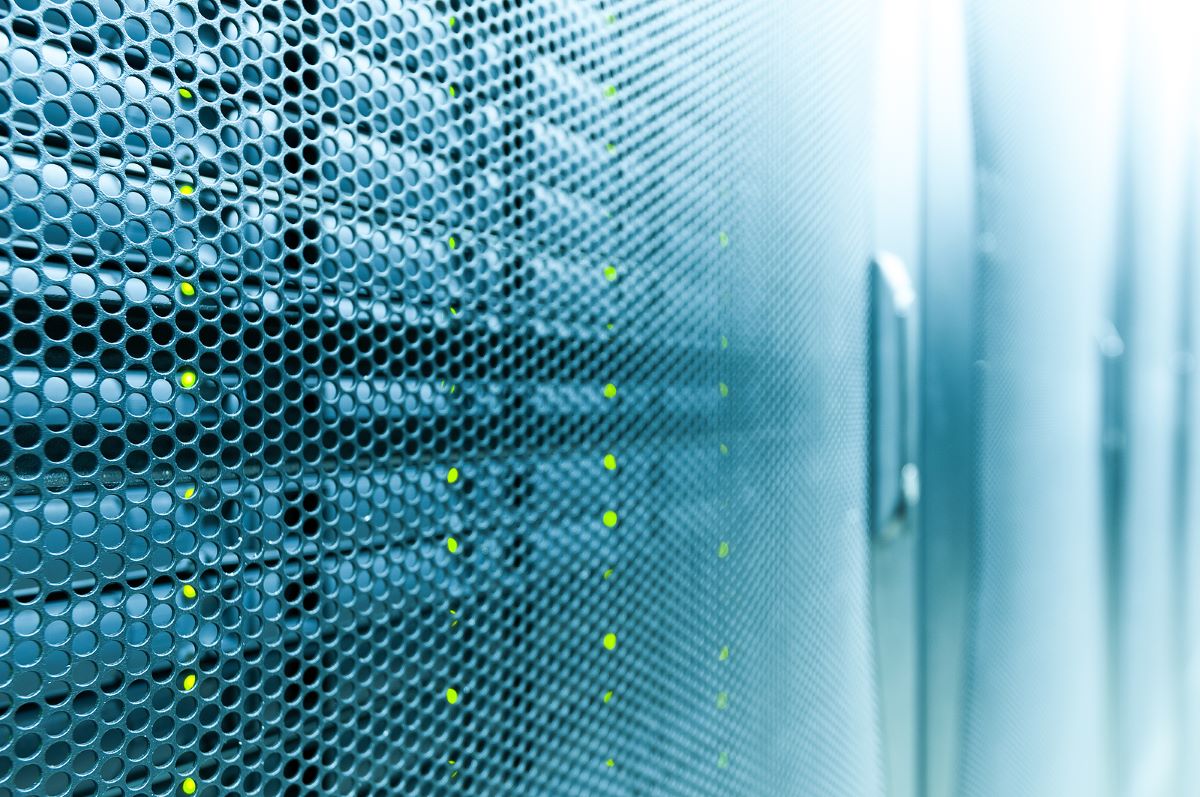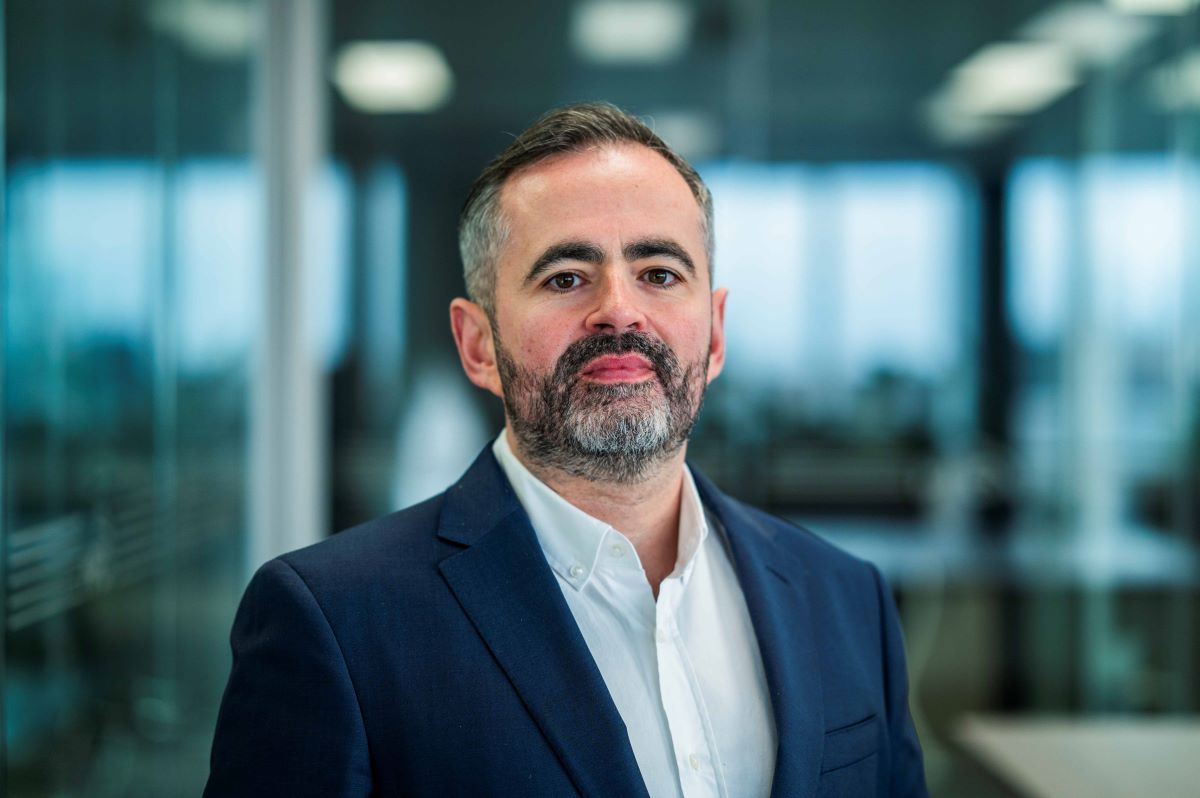Sustainable Infrastructure: Building Resilient, Low-Carbon Projects
Cooling
Data Centres
Liquid Cooling Technologies Driving Data Centre Efficiency
News
Sustainable Infrastructure: Building Resilient, Low-Carbon Projects
Lenovo expands Neptune liquid cooling ecosystem
Lenovo has expanded its Neptune liquid-cooling technology to more servers with new ThinkSystem V4 designs that help businesses boost intelligence, consolidate IT and lower power consumption in the new era of AI.
Powered by Intel Xeon 6 processors with P-cores, the new Lenovo ThinkSystem SC750 V4 supercomputing infrastructure (pictured above) combines peak performance with advanced efficiency to deliver faster insights in a space-optimised design for intensive HPC workloads.
The full portfolio includes new Intel-based solutions optimised for rack density and massive transactional data, maximising processing performance in the data centre space for HPC and AI workloads.
“Lenovo is helping enterprises of every size and across every industry bring new AI use cases to life based on improvements in real-time computing, power efficiency and ease of deployment,” says Scott Tease, Vice President and General Manager of High-Performance Computing and AI at Lenovo. “The new Lenovo ThinkSystem V4 solutions powered by Intel will transform business intelligence and analytics by delivering AI-level compute in a smaller footprint that consumes less energy.”As part of its ongoing investment in accelerating AI, Lenovo is pushing the envelope with the sixth generation of its Lenovo Neptune liquid-cooling technology, delivering it for mainstream use throughout its ThinkSystem V3 and V4 portfolios through compact design innovations that maximise computing performance while consuming less energy. Lenovo’s proprietary direct water-cooling recycles loops of warm water to cool data centre systems, enabling up to a 40% reduction in power consumption.The Lenovo ThinkSystem SC750 V4 helps support customers’ sustainability goals data centre operations with highly efficient direct water-cooling built directly into the solution and accelerators that deliver even greater workload efficiency with exceptional performance per watt. Engineered for space-optimised computing, the infrastructure fits within less than a square meter of data centre space in industry-standard 19-inch racks, pushing the boundaries of compact general-purpose supercomputing.
Leveraging the new infrastructure, organisations can achieve faster time-to-value by quickly and securely unlocking new insights from their data. The ThinkSystem SC750 V4 uses a next-generation MRDIMM memory solution to increase critical memory bandwidth by up to 40%. It is also designed for handling sensitive workloads with enhanced security features for greater protection.
Building on Lenovo’s leadership in AI innovation, the new solutions achieve advanced performance, increased reliability and higher density to propel intelligence.
For more from Lenovo, click here.
Simon Rowley - 26 September 2024
Data Centres
News
Sustainable Infrastructure: Building Resilient, Low-Carbon Projects
OpenUK delivers data centre sessions at Labour Conference
OpenUK, the non-profit organisation representing the UK’s Open Technology sector, hosted two panel sessions during the recent Labour Party Conference in Liverpool.
The first panel was titled The Intelligent Environment: Building Sustainable Data Centres with OpenUK - the only session during the conference that covered data centres’ essential role to the UK economy. Only a week after data centre environments had been re-classified as critical national infrastructure by the Department for Science, Innovation and Technology - and hot on the heels of Amazon committing to spending £8 billion in the UK data centre space over the next five years - the panel provided attendees with an overview of the challenges faced by the UK’s data centre sector and the impact of policy decisions on energy consumption, planning decisions and construction, delivery of services and technology innovations like AI and the benefits to be reaped from open technology.
Amanda Brock, CEO at OpenUK, says, “The technology sector is a powerhouse for the economy and at the heart of supporting the UK’s future growth, but only if it has the right support and policy in place. DSIT’s recent announcement re-categorising data centres as critical national infrastructure points to a healthy desire to support expanding their operations, but this challenge reaches far beyond planning restrictions identified in the Labour Manifesto, if those goals are to be delivered. For our AI and digital futures to flourish, understanding critical infrastructure - including the platform economy built on open source software, upgrading networks and open hardware environments to enable state of the art data centres - must be in place if the UK’s technology sector is to succeed.
“The UK’s leadership in the AI sector punches well above its weight due to the quality of the research taking place in the UK and its available talent. But the foundation is shaky and others are snapping at the UK’s heels. To capitalise on these advantages, and to support business growth, the Government must build on the UK’s wealth of talent around open source and AI. The UK’s open source community is currently not making it into the conversation and we are seeing France push ahead in AI openness.”
Simon Rowley - 23 September 2024
Data Centres
Infrastructure Management for Modern Data Centres
News
Sustainable Infrastructure: Building Resilient, Low-Carbon Projects
EcoDataCenter issues bonds to accelerate AI growth
EcoDataCenter has successfully issued its inaugural SEK 1 billion senior unsecured bonds, to enable further investments in critical AI infrastructure. The company says that as a result, it thereby strengthens its position as a leading player in sustainable, energy-efficient data centres for AI in Europe.
The bond issue generated strong demand from institutional investors, underscoring the market's confidence in EcoDataCenter’s business plan.
Peter Michelson, CEO of EcoDataCenter, says, "AI is a dynamic investment area with enormous potential to drive growth and productivity. Scaling AI requires capital. This is an important milestone for us, on our journey to become the leading European player in AI infrastructure."
Europe demands ambitious investments in AI infrastructure to maintain global competitiveness and drive innovation. EcoDataCenter says that it has quickly established itself as a leader in this space, with several recent announcements supporting its expansion. In early September, it was announced that EcoDataCenter would partner with AI-company CoreWeave to build one of Europe's largest AI clusters in Falun. Two weeks later, EcoDataCenter purchased a 20-hectare industrial site in Borlänge with an initial capacity of 240 MW, to establish one of Europe's largest data centres.
Peter Michelson, CEO of EcoDataCenter (pictured above), comments, “The demand for data centres that can combine the latest technology with high energy efficiency and with a low climate footprint is strong and constantly increasing. We are very well positioned to capitalise on the growth opportunities in the sector."
EcoDataCenter opened its first data centre in Falun, Sweden in 2019 and also operates facilities in Stockholm and Piteå. Thanks to a combination of technological leadership and unique sustainability solutions, EcoDataCenter has gained the trust of major customers such as BMW, DeepL, and CoreWeave.
The senior unsecured bonds are issued by EcoDataCenter’s holding company - EcoDC Holding – under a framework of SEK 2 billion, with a tenor of three years and a floating interest rate of STIBOR three months plus 4.75% per annum. EcoDataCenter intends to apply for listing of the bonds.
ABG Sundal Collier AB acted as sole arranger in connection to the issuance of the bonds. Roschier Advokatbyrå AB acted as legal counsel.
For more from EcoDataCenter, click here.
Simon Rowley - 18 September 2024
Data Centres
News
Sustainable Infrastructure: Building Resilient, Low-Carbon Projects
Data centre emissions 662% higher than initially reported
On 15 September, it was reported by The Guardian that “emissions from in-house data centres of Google, Microsoft, Meta and Apple may be 7.62 times higher than the official tally”.
In light of this news, Elio van Puyvelde, Chief Information Officer at Nscale, a fully vertically integrated AI cloud provider, comments on how the increase in emissions from Big Tech - that use data centres to meet their AI demands - are eye-watering.
Elio explains “The race for AI dominance is heating up, but at what cost? The increase in emissions, 7.62 times higher than initially reported by these tech giants, are largely down to legacy data centres unable to cope with the power demands of AI. And while big tech invests heavily in renewables, the sheer scale of the AI boom threatens to overwhelm those efforts.
“Big tech is in a bind, but there’s a way out. Ensuring data centres are built where there is stable supply of renewable power is one thing, but the industry must focus on maximising efficiency too. The reality is AI workloads are so often poorly optimised, wasting energy use and delivering poor returns. Accelerating AI hardware and software optimisation is one of the best routes to managing AI energy consumption levels.
“Companies must optimise and fine-tune AI models as well as invest in energy efficient AI accelerator hardware. The open source community is already hard at work finding ways to make AI models run more efficiently and with less impact on the environment. Open source innovation will drive more efficient and sustainable AI use.”
For more from Nscale, click here.
Simon Rowley - 16 September 2024
Data Centres
News
Sustainable Infrastructure: Building Resilient, Low-Carbon Projects
Echelon receives grid connection for DUB20 campus
Echelon Data Centres says that a landmark decision to provide a grid connection for the company’s DUB20 data centre campus in County Wicklow, Ireland, will ensure investment of €3.5bn (£2.6bn) and 1,300 jobs.
A spokesperson for Echelon described the decision as an important endorsement of responsible data centre development in Ireland and a major milestone for the company. Echelon will create 1,100 jobs during construction of the facilities in Arklow, and 200 permanent positions once the data centre is operational.
DUB20 is the first large-scale data centre to meet the Commission for the Regulation of Utilities’ (CRU) 2021 criteria for data centre connections. Onsite energy centres at the facility will have the capacity to provide security of supply services to EirGrid, Ireland’s Transmission System Operator (TSO), when renewable generation output drops below grid demand.
The grid connection will allow Echelon to begin work on a 220kV substation at the site that will allow access to the grid for renewable energy generated off the coast of Wicklow in the future. Echelon is also investing in solar, battery energy storage systems, and renewable fuels to replace fossil fuel consumed by the data centre.
Cormac Nevin, Head of Energy Systems at Echelon, says, “DUB20 is a model for the future – and EirGrid’s decision to provide a grid connection for the facility will ensure investment of €3.5bn in data centre and energy infrastructure in County Wicklow. It is an endorsement of sustainable data centre development as it follows a pathway to net zero emissions and demonstrates the role of Government policy in achieving that. It is also a strong statement that Ireland takes its climate responsibilities seriously but is open for business to the data centre sector and the jobs and inward investment that comes with it.”
Earlier this year, Echelon announced that Starwood Capital Group had invested approximately €850m to become a 50% shareholder in the company and provide material capital for its continued growth. The transaction also included a new €900m debt facility provided by Morgan Stanley and United Overseas Bank. Echelon now intends to proceed to the construction phase at DUB20.
Cormac continues, “This project will ensure investment of €3.5bn and create 1,300 jobs. It will support the development of renewable energy resources, it will provide support for the national grid to ensure security of supply, and it will help Ireland transition to a low-carbon economy. DUB20 will demonstrate what is possible when we co-locate critical infrastructure like data centres and renewable energy resources. Everyone at Echelon is now looking forward to building Ireland’s greenest large-scale data centre.”
Wicklow-based Senator, Pat Casey, adds, “This landmark decision from EirGrid is great news for Wicklow’s emerging digital economy. Echelon will now be able to rejuvenate the IFI site in Arklow with a multi-billion-euro investment that will create sustainable jobs and build a world-class data centre and digital technology campus in Arklow that will be powered by sustainable energy.”
For more from Echelon Data Centres, click here.
Simon Rowley - 6 September 2024
Data Centres
News
Sustainable Infrastructure: Building Resilient, Low-Carbon Projects
Ramboll acquires data centre consulting company
Ramboll, a global architecture, engineering and consultancy company founded in Denmark, has acquired the data centre consulting company, i3 Solutions Group.i3 Solutions Group has strong competencies in strategy, planning, design and commissioning of data centres and advises clients in Europe and Asia in storing and securing their business-critical, digital environments. With the acquisition of i3 Solutions, a company based in the UK and Singapore, Ramboll now has hundreds of dedicated data centre design experts globally.
"We are very pleased to welcome i3 Solutions Group' experts to Ramboll," says Peter Heymann Andersen, Group Chief Operating Officer of Ramboll. "For more than two decades, Ramboll has provided expert advice in the fields of environment, water, energy and construction to data centres and helped clients to design, build and operate water and energy efficient solutions worldwide. At Ramboll, we operate with the mindset that 100% renewably powered, zero waste data centres are achievable.
"With i3 Solutions, Ramboll gets a company on board with deep, technical domain knowledge within data centres, which will strengthen Ramboll's consultancy within integrated, innovative data centre solutions, and strengthen the company's position at the top of the international league of data centre consulting companies."
Ed Ansett, Founder and Chairman of i3 Solutions Group, adds, "Becoming part of Ramboll is a fantastic opportunity to expand the portfolio of consulting engineering services to i3's existing, global client base, while at the same time bringing i3's specialist technical expertise into Ramboll's current and future clients across 35 countries around the world.
"Ramboll has a strong commitment to fostering a sustainable development of the data centre sector. This commitment aligns with i3's own belief in the importance of minimising the environmental impact of data centres on society."
The data centre industry is growing rapidly. Since 2010, global internet traffic has expanded 25-fold and global data consumption is expected to continue to rise. With data centres and data transmission networks each accounting for 1% to 1.5% of global electricity use, and 2% of greenhouse gas emissions, improving the sustainability performance of the sector is more important than ever.
For more from i3 Solutions Group, click here.
Simon Rowley - 5 September 2024
Colocation Strategies for Scalable Data Centre Operations
Data Centre Operations: Optimising Infrastructure for Performance and Reliability
Data Centres
News
Sustainable Infrastructure: Building Resilient, Low-Carbon Projects
STT GDC reinforces commitment to sustainability
ST Telemedia Global Data Centres (STT GDC), one of the world's fastest-growing data centre colocation services providers headquartered in Singapore, has announced the release of its enhanced Sustainability-Linked Financing Framework (SLFF).
This update builds on the company's ongoing commitment to achieving carbon-neutral data centre operations by 2030, with more rigorous targets that align its financing strategies with even more impactful sustainability goals.
First introduced in July 2022, the SLFF is a key component of STT GDC's Environmental, Social, and Governance (ESG) strategy. This framework facilitates the structuring of STT GDC's financing, where applicable, in the form of Sustainability-Linked Financing Transactions (SLFTs) including, but not limited to, Sustainability-Linked Bonds (SLBs) including Sustainability-linked Perpetuals (SLPs), and Sustainability-Linked Loans (SLLs). The company successfully issued the first-ever Sustainability-Linked perpetual securities in Asia under this framework in January 2024.
The enhanced SLFF demonstrates the company's dedication to more ambitious sustainability goals and upholds STT GDC's sustainability commitments with stringent Key Performance Indicators (KPIs) and Sustainability Performance Targets (SPTs), ensuring advancement of mid-to long-term sustainability goals. The SLFF was given the independent tick of approval from ESG ratings company, Sustainalytics, which provided Second Party Opinion services for the project.
Significant enhancements have been made to the inaugural 2022 framework, advancing STT GDC's sustainability efforts across three key targets:
• Renewable energy: Increase the use of renewable energy to 85% by 2028.• Carbon intensity: Achieve a 70% reduction in carbon intensity from the 2021 baseline by 2028.• Green data centres: Expand the proportion of green data centres to 65% by 2028.
In addition, the scope of the SLFF has been broadened to include STT GDC's subsidiaries in all of the company's geographies. This expansion reflects its ongoing efforts to ensure that its sustainability commitments are integrated across all operations globally, reinforcing STT GDC's desire to promote sustainable practices within the data centre industry.
Bruno Lopez, President and Group CEO, STT GDC, comments, "Sustainability remains a priority for STT GDC, and the refined Sustainability-Linked Financing Framework demonstrates our unwavering commitment to achieving carbon-neutrality in our operations by 2030 and reinforces our position as a leader in driving positive change within the data centre industry. This framework is essential to our strategy, aligning our financial practices with our deep commitment to sustainability as we continue to drive growth responsibly in the burgeoning global digital economy."
For more from STT GDC, click here.
Simon Rowley - 5 September 2024
Colocation Strategies for Scalable Data Centre Operations
Data Centre Build News & Insights
Data Centre Operations: Optimising Infrastructure for Performance and Reliability
Data Centre Projects: Infrastructure Builds, Innovations & Updates
Data Centres
Infrastructure Management for Modern Data Centres
News
Sustainable Infrastructure: Building Resilient, Low-Carbon Projects
Stellium announces Open Compute Project collaboration
Stellium Datacenters, a colocation operator and provider of data centre infrastructure solutions, has announced a strategic Open Compute Project (OCP) collaboration with Submer, a pioneer in advanced immersion cooling technologies, and ExxonMobil, a global immersion cooling fluid manufacturer.
Closely aligned with the OCP’s aim of accelerating data centre innovation and efficiency through the development and sharing of open-source hardware designs, the collaboration between Stellium, Submer and ExxonMobil marks a significant milestone in the pursuit of sustainable and efficient data centre solutions, Stellium tells us. The three companies will jointly focus on several innovative customer-centric OCP solutions initiatives including:
• Immersion Cooling Integration: Submer's state-of-the-art immersion cooling technology will be seamlessly integrated into Stellium Datacenters' infrastructure, enhancing energy efficiency and overall performance. This move aligns with the OCP's focus on driving energy-efficient solutions in data centres.
• Sustainable Data Centre Design: The joint project will prioritise sustainable practices, reflecting the commitment of both companies to environmental responsibility. By incorporating Submer's immersion cooling technology, Stellium Datacenters aims to reduce its carbon footprint and energy consumption significantly.
• Innovative Hardware Solutions: Stellium Datacenters and Submer will collaborate on developing and optimising hardware solutions based on OCP principles. This will contribute to the evolution of open-source hardware designs, fostering a community-driven approach to innovation.
• Enhanced Performance and Reliability: Through this collaboration, Stellium Datacenters seeks to enhance the overall performance and reliability of its data centre infrastructure, providing clients with cutting-edge solutions that meet the demands of a rapidly evolving digital landscape.
• High Performance Immersion Cooling Fluid: ExxonMobilTM DC 3235 Super, a cooling fluid validated and endorsed by Submer, is set to demonstrate how its heat transfer capabilities and material compatibility effectively contributes to this advanced immersion cooling solution.
“We are thrilled to embark on this collaborative journey with Submer, which is seen as one of the leading forces in immersive cooling solutions,” says Ed Bissell, Sales and Marketing Director at Stellium Datacenters. “Being one of only two OCP data centres in the UK, Stellium is excited to be working with Submer on customer-driven solutions which will leverage our respective expertise to advance the OCP's objectives. This collaboration exemplifies our dedication to providing sustainable and efficient data solutions that align with the industry's best practices. By integrating Submer's immersion cooling technology, we are confident in our ability to set new benchmarks for performance, energy efficiency, and environmental responsibility."
Oriol Chavanel, Submer Ecosystem Enablement Tech. Lead & OCP Lead, adds, "Collaborating with Stellium Datacenters and ExxonMobil on this Open Compute Project is a testament to our shared commitment to innovation and sustainability. By combining our expertise in immersion cooling with Stellium's cutting-edge data infrastructure, we aim to redefine the standards for data centre efficiency and reliability."
Glen Sharkowicz, Global Market Development Manager, adds, “ExxonMobil is proud to collaborate with Stellium Datacenters and Submer on this innovative immersion cooling technology. This collaboration demonstrates our collective commitment to advancing OCP’s objectives and delivering new cooling solutions to the market.”
As the project progresses, each company will leverage the expertise of best-of-breed solutions partners and share insights and advancements with the broader tech community, reinforcing their commitment to collaborative and open-source initiatives.
For more from Stellium Datacenters, click here.
Simon Rowley - 2 September 2024
Data Centre Operations: Optimising Infrastructure for Performance and Reliability
Enterprise Network Infrastructure: Design, Performance & Security
News
News in Cloud Computing & Data Storage
Sustainable Infrastructure: Building Resilient, Low-Carbon Projects
DataVita launches alternative to public cloud services
DataVita, Scotland’s largest data centre and cloud services provider, has launched National Cloud, a platform that addresses the challenges many organisations face when using the public cloud that supports the wider use of artificial intelligence (AI).
National Cloud is designed for workloads that don’t fit well into the traditional public cloud and it offers full transparency and predictability over costs – with no hidden fees or egress charges – removing the risk of the potentially infinite costs that come with existing pay-as-you-go public cloud models.
The service is delivered from some of the most sustainable data centres in the UK, offering the lowest digital emissions of any cloud provider in the country, DataVita claims. This also ensures data residency within the UK – whereas many public could operators use overseas facilities – addressing compliance and security concerns for public services and regulated industries.
Built on open architecture and interoperable systems, National Cloud allows integration and movement between different products which reduces vendor lock-in risks and enables hybrid cloud capabilities. It is purpose-built to handle complex workloads, supporting the requirements of medium and large enterprises, tech start-ups, and public sector organisations.
DataVita has forged a strategic partnership with Hewlett Packard Enterprise (HPE) to deliver the new platform, combining the agility of a specialised cloud provider with the robust technology, industry experience, and simplicity of an established market leader.
Danny Quinn, MD of DataVita (pictured above), says, "National Cloud is our answer to the recurring issues organisations face with public cloud services. We're actively seeking out workloads that public clouds can't efficiently support, particularly those driven by AI's growing demands and organisations requiring intricate hybrid cloud architectures. Our platform offers the performance, security, and scalability needed for these intensive applications, all while providing cost predictability and sustainability.
"Available across the UK, we're already seeing significant interest from organisations looking to escape the limitations of public cloud services and gain more control over their critical workloads and data. Our focus on transparency, sustainability, and expertly tailored solutions sets us apart in the market."
Xavier Poisson, Global Vice President for Service Providers & Colocation Providers at HPE, adds, “The National Cloud combines HPE GreenLake cloud’s leading capabilities to manage, observe, automate and secure complex cloud environments, with DataVita’s experience as a leading provider of cloud and connectivity services. With this new platform, customers across the UK will have access to a trusted infrastructure that allows them to stay in full control of their data and derive value from it.”
For more from DataVita, click here.
Simon Rowley - 29 August 2024
Data Centres
Infrastructure Management for Modern Data Centres
News
Sustainable Infrastructure: Building Resilient, Low-Carbon Projects
Hyperview joins forces with Novem Digital
Hyperview, a cloud-based data centre infrastructure management (DCIM) platform, has announced a strategic partnership with Novem Digital, an innovative digital risk management and IoT company.
This collaboration aims to leverage the Hyperview platform to help property owners manage building and sustainability related risks using data insights to streamline operations, reduce operational costs, and enhance asset sustainability through predictive capabilities.
For insurers, this partnership provides transparency in risk assessment and enables accurate price alignment with risk profiles. The partnership also delivers a software platform that fosters collaborative customer relations, providing data that empowers informed insurance decisions for real estate and construction value outcomes, including better capital planning.
Hyperview and Novem are in the process of developing a software add-on named Property Risk Management by Novem. This add-on will enhance the existing Hyperview platform with a suite of features specifically designed for the built environment. Key functionalities will include risk management, capital planning, and predictive analytics.
"We're excited to partner with Novem Digital to enhance our SaaS offering," says Jad Jebara, President and CEO of Hyperview. "Our goal has always been to create a versatile digital infrastructure management platform. After successfully focusing on data centres, we're now ready to expand our proven technology to the broader real estate and insurance sectors."
Clint Undseth, CEO of Novem Digital, adds, "Our partnership with Hyperview is a major step in enhancing risk management for the built environment. This collaboration offers boards and executives critical insights into strategic and operational risks. Integrating Hyperview's platform with Novem’s expertise in harmonising real-time and historical building data is a game changer that enhances our customers' operations and asset value.”
Scott Ewing, Risk Consulting Head of the Americas for AXA XL, emphasises the increasing concerns surrounding natural catastrophes, cyber threats, and system failures in the insurance industry. He notes, “Incidents like electrical arc flashes and water damage are rising sharply. This innovative platform enhances risk assessment and helps our clients identify cost savings and sustainability opportunities. By leveraging data-driven insights, we can offer 24/7 virtual risk engineering services.”
The partnership represents a significant opportunity for the insurance industry to enhance collaboration with customers, moving away from the conventional 12-month transaction cycle and towards cultivating long-term relationships. Key benefits of the Property Risk Management add-on include:
Cost Reduction: By streamlining operations and utilising data insights, stakeholders can identify areas for cost savings, leading to more efficient asset management and reduced operational expenses.
Capital Planning: Leverage true predictive operational data and correlate to historical fault data to enable better capital planning and asset lifecycle management.
Informed Decision-Making: Access to predictive analytics empowers real estate and insurance professionals to make data-driven decisions, ensuring accurate alignment between pricing and risk profiles.
Enhanced Risk Management: The integration of Hyperview's platform with Novem's data analytics capabilities provides comprehensive risk assessment tools, improving transparency and accuracy in identifying property and climate related risks.
Improved Sustainability: The partnership fosters sustainability by offering tools and strategies that help enhance the environmental performance of buildings, promoting eco-friendly practices among property owners and insurers.
For more from Hyperview, click here.
Simon Rowley - 28 August 2024

Head office & Accounts:
Suite 14, 6-8 Revenge Road, Lordswood
Kent ME5 8UD
T: +44 (0)1634 673163
F: +44 (0)1634 673173
